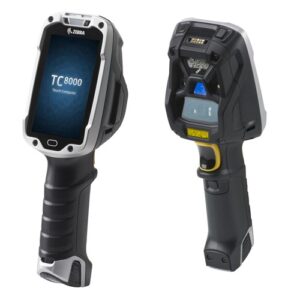Many enterprises still believe real-time data collection begins and ends with front-end dashboards. But here’s the truth: what really powers real-time insights is backend system integration. Without it, you’re just syncing noise—not intelligence. Enterprises that fail to connect their backend systems are unknowingly draining efficiency, speed, and accuracy across operations.
It is time to unveil the specifics of it all!

Why Is Backend System Integration So Critical Now?
Real-time decision-making has become non-negotiable. But how can you make fast, accurate decisions if your ERP, MES, CRM, SCADA, and IoT platforms are working in silos?
Here’s how backend system integration changes the game:
- Eliminates data silos by connecting systems of record into one enterprise data pipeline
- Accelerates real-time data sync, reducing latency across platforms
- Supports predictive and proactive decision-making with timely, accurate data
- Creates a unified view across departments, from operations to customer service
- Strengthens IoT data ingestion into core business workflows
Still relying on spreadsheets and isolated systems? You’re not collecting real-time data—you’re reacting too late.
How Does Backend Integration Enable Enterprise-Wide Visibility?
You need more than just barcoding and RFID tools. Integration sits at the heart of any real-time data collection strategy. It links the technologies you already use—whether on-site or in the field.
Key Benefits:
- Message Brokers (e.g., Kafka, MQTT): Enable scalable, low-latency communication between systems
- API Integration: Seamlessly connects cloud-based and on-premises platforms
- Data Aggregation Engines: Normalize and transform data for uniformity
- Real-time Dashboards: Consume backend-synced data for frontline visibility
According to Gartner’s 2024 Digital Transformation Trends, 72% of enterprises cite backend integration as the primary enabler of real-time analytics.
What Systems Can You Integrate for Maximum Efficiency?
Don’t just think ERP or CRM. Think end-to-end data sync.
- ERP (SAP, Oracle): Sync order, inventory, and financial data
- MES: Capture production data in real time for quality control
- CRM: Bridge customer interactions with supply chain workflows
- SCADA/PLC: Feed machine and process data into decision systems
- IoT Platforms: Ingest sensor data to drive intelligent automation
- RFID & Barcode Devices: Sync scanned data directly into central systems
Whether you’re in manufacturing, retail, logistics, or healthcare—backend integration ensures data collected at the edge reaches your core systems instantly.
What Happens If You Don’t Integrate Your Backend Systems?
Disconnected systems don’t just slow you down—they cost you money. Inaccuracy, duplicate efforts, and decision delays all bleed your ROI.
Here’s what poor integration really looks like:
- Stale data making its way into critical decisions
- Manual entry leading to data loss and duplication
- Operational teams flying blind without system-wide visibility
- Compliance risks from untracked data points
It’s not just inefficient—it’s risky.
Where Does Backend Integration Meet Mobility?
In a mobile-first world, field workforce apps rely heavily on backend integrations to ensure they operate with real-time data. Whether a technician is scanning inventory, a healthcare worker is updating patient records, or a logistics agent is confirming delivery—data must flow instantly from edge to core.
How Does the 5th Wave Help You Stay Ahead?
At 5th Wave, we understand your operational complexity. Whether you’re using RFID, advanced barcoding, or IoT-based solutions, we offer a range of backend integration services that are tailored to your existing tech stack. From mobile data collection to enterprise-grade synchronization—we’re here with our range of options to cater to all your demands.
Want to Build a Future-Proof Data Collection Ecosystem?
When you connect your platforms through smart backend integration, you empower your teams, streamline your workflows, and make your data work harder for you.
It’s not just about tech. It’s about transforming how your business moves, measures, and decides.
5 FAQs You Shouldn’t Miss
Q1: What is backend system integration?
Backend system integration is the process of connecting enterprise systems like ERP, CRM, and IoT platforms to ensure continuous, real-time data exchange.
Q2: How does it support real-time data collection?
It enables seamless data sync between systems, reducing latency and allowing instant access to accurate data for smarter decisions.
Q3: Which tools are used for integration?
Common tools include APIs, message brokers (like Kafka), and middleware platforms that link data pipelines across systems.
Q4: Can it improve IoT data ingestion?
Absolutely. Integrated backend systems ensure that IoT sensor data is processed, normalized, and routed into enterprise platforms for actionable insights.
Q5: Is backend integration scalable for SMEs?
Yes. Solutions can be customized for scalability, whether you’re a global manufacturer or a small business with growing data needs.
Final Thought: Ready to Stop Running on Fragmented Data?
Let’s face it—without integration, your data is just fragmented noise. Backend system integration is the foundation for true operational intelligence.
Want to see how integration can redefine your enterprise data strategy? Let’s talk.